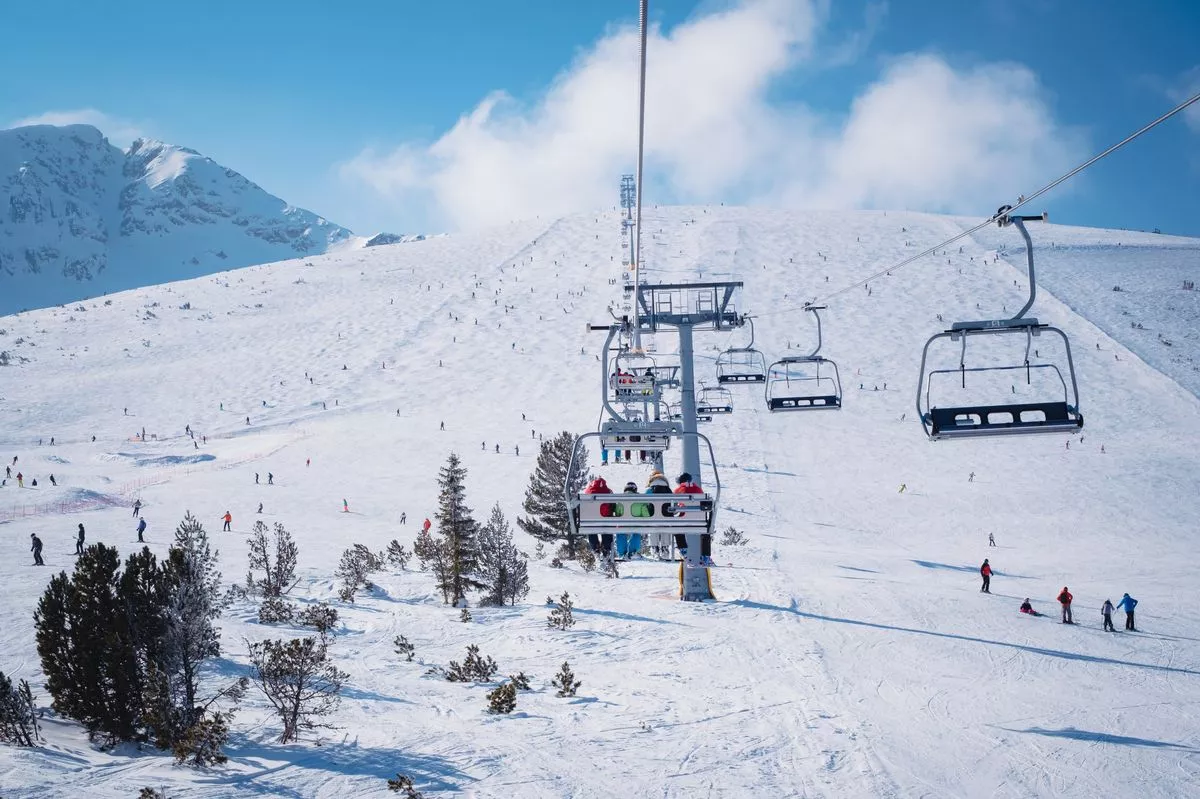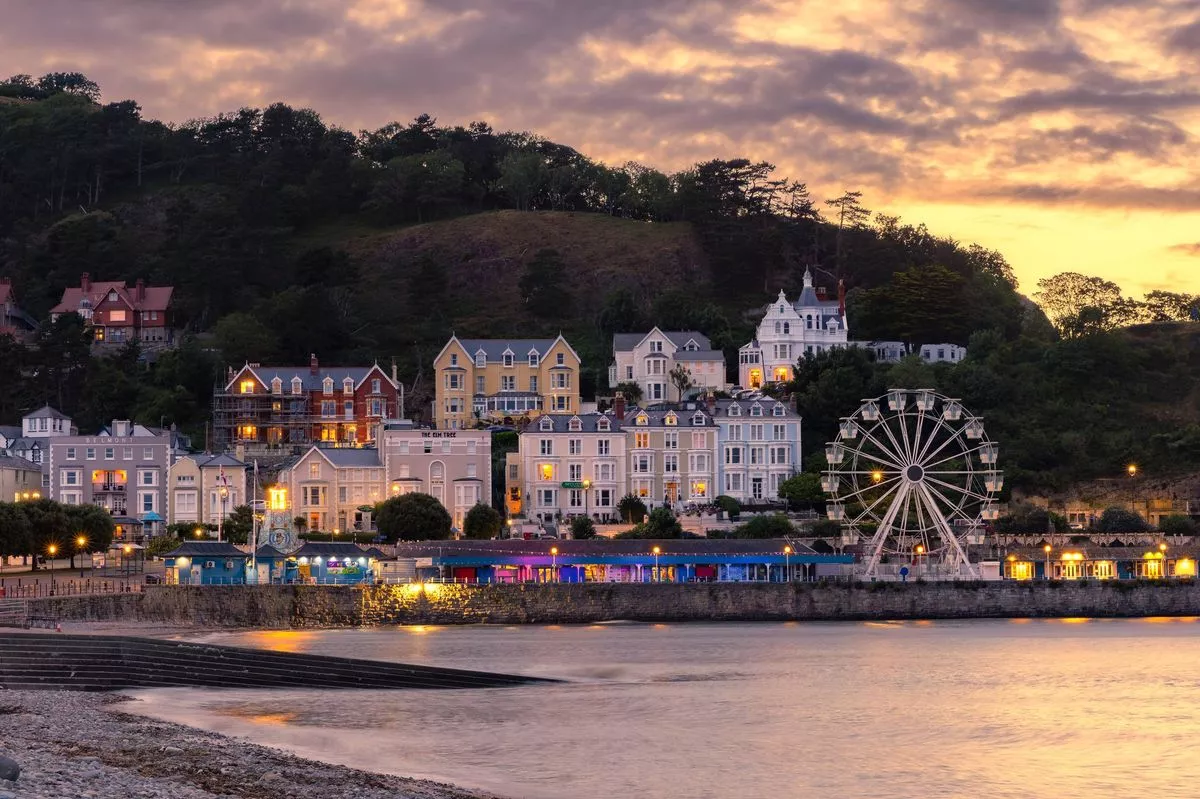Mar Hall Hotel and Resort near Glasgow underwent a £20m refurbishment and was voted in the top 20 resorts in Europe by Condé Nast Traveler readers – and I recently stayed there
Many tourists are drawn to Scotland for the Highlands, Loch Ness and whisky — not necessarily the outskirts of Glasgow. However, I recently discovered a charming corner of Scotland is just a stone’s throw from the baggage claim.
The phrase “airport hotel” isn’t one that ignites much enthusiasm. They’re more often a necessary inconvenience than a destination, but just outside Scotland’s largest city lies the newly refurbished Mar Hall Hotel and Resort. Let’s be clear, this isn’t so much an ‘airport hotel’ as it is a hotel near an airport. The five-star resort has recently undergone a £20million makeover under new management.
Despite being no more than 30 minutes from my flat, it feels like an escape to the country. Arriving at 3pm, which is sunset during the depths of winter here, the sun casts a golden hue over the Clyde and the gently rolling hills and trees beyond. Toto, I don’t think we’re in Glasgow anymore.
The new Mar Hall
At the grand old age of 180, Mar Hall has had several incarnations. Originally commissioned by the 11th Lord Blantyre as the latest Erskine house estate, it was later transformed into a hospital for soldiers returning from World War 1 with amputations.
Fast forward to 2025 and Mar Hall finds itself under fresh ownership once more. For Glaswegians such as myself, an evening spent in a lavish period property offers a welcome escape from everyday life. For those travelling from further away, it provides an exceptionally luxurious introduction to Scotland.
Despite the hotel’s new proprietors being Dubai-based — and its Instagram-ready aesthetic — Mar Hall’s makeover feels unmistakably Scottish. During a tour of the recently renovated establishment, Jim Hamilton from Graven, the interior design company behind the transformation, told me he grew up locally and still lives minutes away.
The quintessentially Glaswegian design house Timorous Beasties provided wallpapers and fabrics, while Glasgow’s Artpistol gallery sourced much of the artwork displayed throughout, including pieces from recent Glasgow School of Art graduates.
Noting how Mar Hall has transformed from “home to hospital to hospitality”, Jim said they aimed to maintain that sense of homeliness and care in its latest incarnation.
One of the callbacks to its Victorian roots is the potted palm trees flanking the entrance hall — a nod to an era when exotic plants were a symbol of sophistication and worldliness. The attention to detail extended to the very walls. A series of four large paintings depicting Scotland’s seasons, commissioned from Scottish artist Nichol Wheatley, are set within custom wall panelling, reflecting the style of the period.
The aesthetic is a bold mix of vibrant colours and patterns: it’s Victorian, but with a 2025 twist. Your gaze is constantly drawn upwards through the lofty spaces towards the stunning vaulted ceilings above. The overall effect is lavish and chic, yet inviting. Whilst it is a five-star resort, the staff are incredibly friendly, making me feel perfectly at ease.
The rooms
It’s nearing December and the hotel has been fully decked out for the festive season. The receptionist, who offers a typically warm Scottish welcome, pauses before the doors to the Gallery, clearly excited to show me the grand room at the heart of the hotel.
For a moment, I worry about having to feign excitement for this kindly lady, but when she swings open the doors, I’m genuinely taken aback. It’s even more impressive in person than online.
To reach one of the hotel’s 74 rooms, guests walk through the Gallery with its plush seating, fireplaces and marble bar. I’m handed the keys to the Erskine grand suite for the night, priced at £1,125 per night, kitted out with a regal sitting room and grand piano.
The sitting room and bathroom, featuring a rolltop bath, offer views over the golf course, River Clyde and picturesque woodlands beyond, in that order. The bespoke bookcases are so perfectly illuminated — as is everything in the hotel — that when I meet Jim, I can’t resist asking if he would design my flat pro bono.
The festive decorations extend to the rooms. I’m thrilled to discover a Christmas tree in the lounge, sparkling next to a handwritten note and dish of treats welcoming me to Mar Hall. It’s enough to make anyone feel warm and fuzzy.
The bedroom, with its luxurious four-poster bed and impeccably luxurious bedding, lulls me to sleep shortly after I start watching a cheesy Netflix Christmas film. It’s a pity I can’t spend more time savouring a hotel room of this standard.
Mar Hall only reopened in May this year, but I hear Kylie Minogue has already stayed in these suites twice.
The food
Before dinner, I enjoy a drink in the Slàinte bar, which is delightfully cosy with a crackling fireplace and a Christmas tree. For dinner, smoked salmon, beef, and sticky toffee pudding are the mainstays of ‘fancy dining’ in Scotland and rightly so. I’m pleased to see all three on the menu.
Layering local smoked salmon on a bed of horseradish and a crunchy cracker was a real treat. The blade of beef was as tender as expected, with dauphinoise and honey-roasted carrots making for a perfect mouthful. The only critique I’d have is that the pudding could have done with more toffee sauce, as is often the case.
The unexpected highlight, however, were the warm fig bread rolls – they’ve been on my mind ever since. And all throughout, the service struck a good balance between being attentive and unobtrusive.
Breakfast in the Dining Room offers a continental selection with a variety of hot options including full Scottish breakfast, sausage egg roll, eggs Benedict, and porridge. I chose the ‘rise & shine crumpet’, a tasty combination of Argyll smoked salmon with scrambled egg.
Location and facilities
Mar Hall is set within a 240-acre estate, just a 25-minute drive from Glasgow city centre or a mere 10 minutes from Glasgow Airport. However, it’s not easily reachable by public transport.
The 18-hole Earl of Mar golf course is conveniently located just outside. Like the hotel, it boasts picturesque views of the River Clyde and the Kilpatrick Hills.
The spa features a swimming pool, saunas and steam rooms. Other amenities include a gym, games room and private screening room.
Final thoughts
Mar Hall’s new owners have invested millions into the hotel with the aim of making it a world-class destination. Resort director Andy Roger shared plans for a clubhouse featuring a second restaurant and a state-of-the-art indoor-outdoor spa.
However, it faces tough competition just an hour up the M8. This year, Mar Hall made it into the top 20 resorts in Europe as voted by readers of American luxury travel magazine Condé Nast Traveler. The number one spot on the list? Gleneagles. This iconic resort is a Scottish summer camp for the rich, offering seven eateries, three golf courses and a spa, along with horse riding, shooting, fishing, off-roading and more in the hills of the Perthshire resort.
While it may not be a full-service millionaire’s playground, I’m already excited about returning. Mar Hall tops my list for a pampering staycation with my husband or for afternoon tea with out-of-town visitors. Once the spa is refurbished, I know it’ll be a huge hit with locals.
The more time I spent at Mar Hall, the less I wanted to leave, and that’s the sign of a great hotel.
Booking details
Rooms and packages can be booked through Mar Hall’s website. Rooms start from £292.




